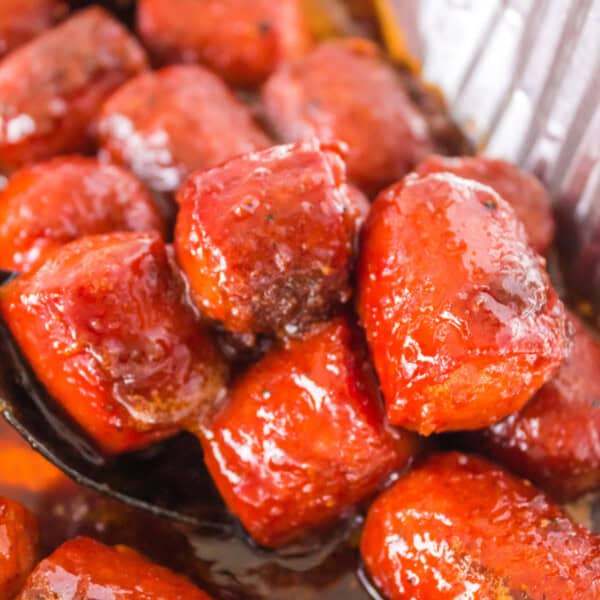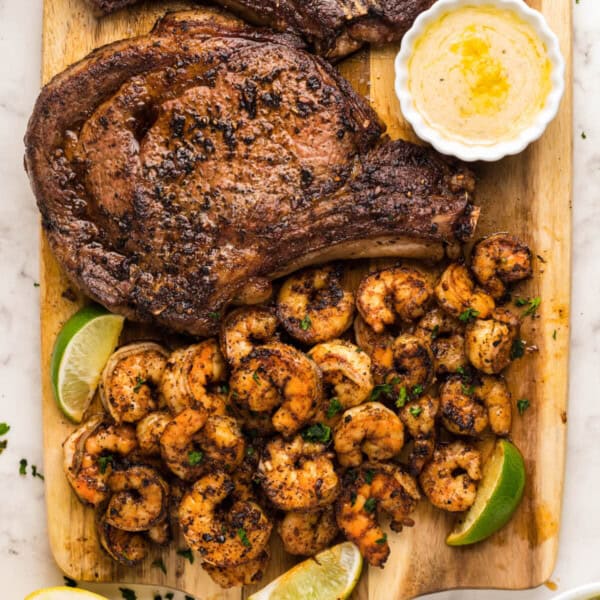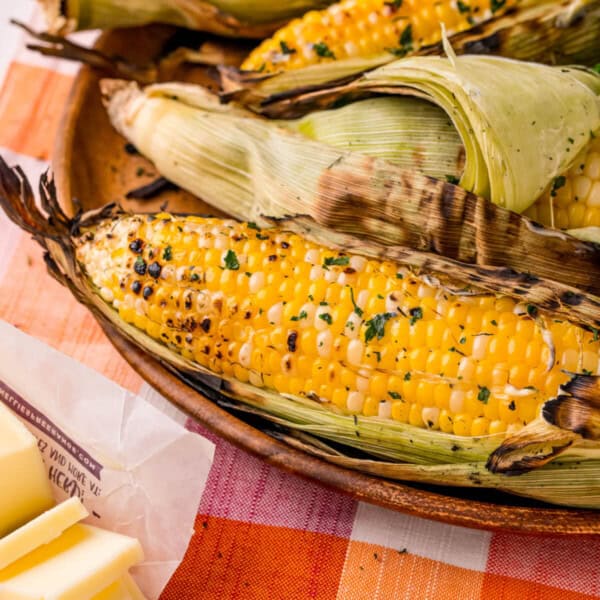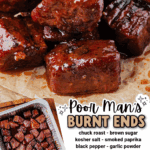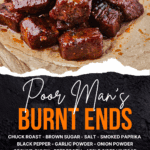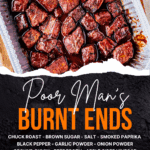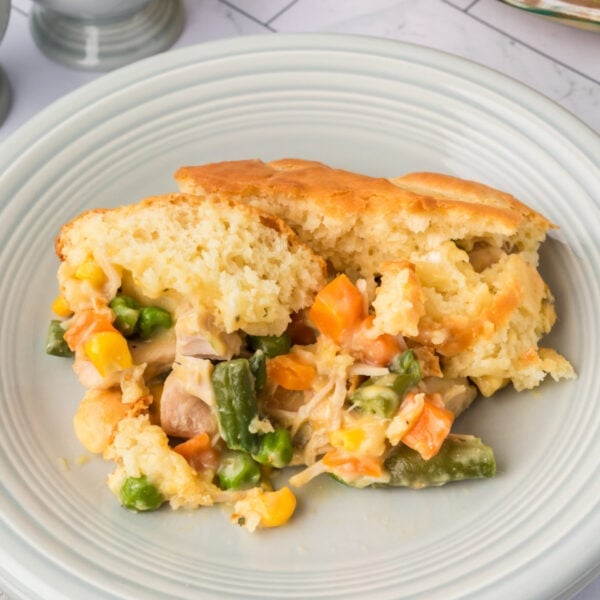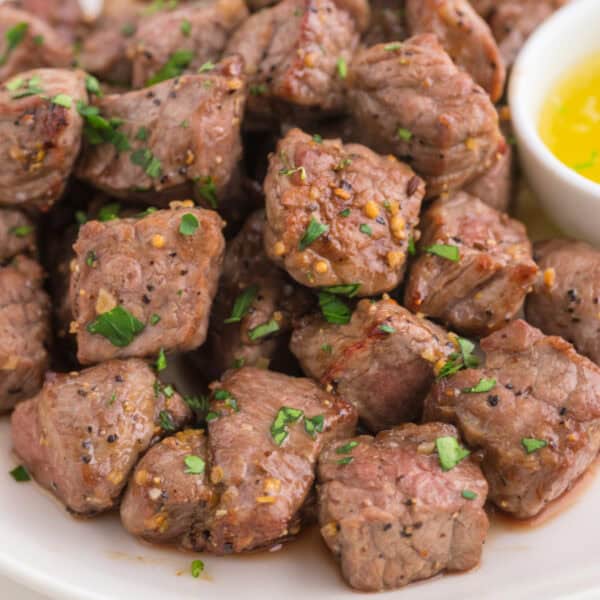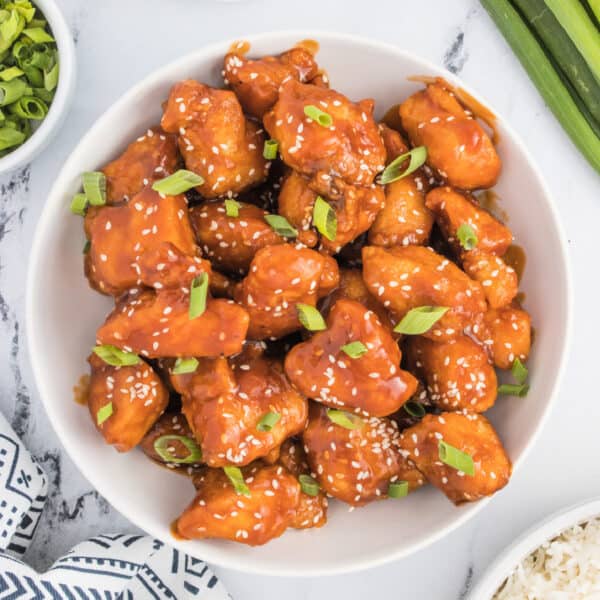This post may contain affiliate links. As an amazon associate, I earn from qualifying purchases. See my full Disclosure Policy for details.
Skip the brisket and make these juicy, flavor-packed Poor Man’s Burnt Ends with chuck roast! Easy to smoke, loaded with BBQ goodness. 🍖😋
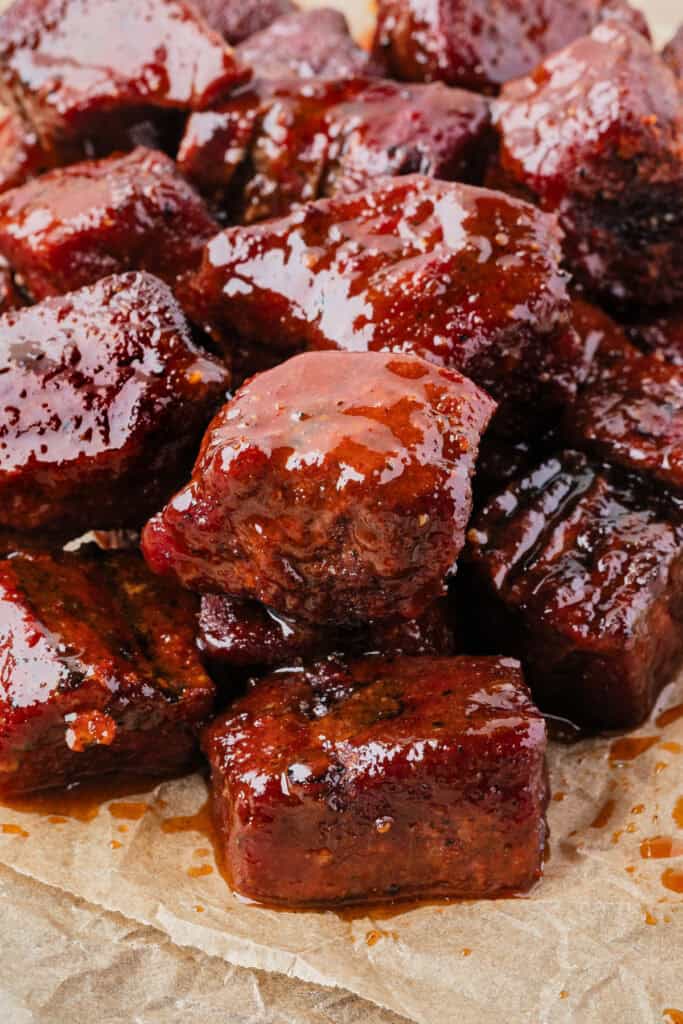
Pin this now to find it later
Pin ItBurnt Ends
Smoked brisket is always a hit at any BBQ, but let’s be honest – it takes time and money. I first had Poor Man’s Burnt Ends at a friend’s backyard BBQ. They used chuck roast for burnt ends instead of brisket, and the flavor blew me away. Tender, smoky, saucy, and packed with flavor. I immediately knew I had to try to recreate it at home. After a few rounds of testing, this Poor Man’s Burnt Ends recipe became one of our family favorites.
These chuck roast burnt ends are perfect when you want big BBQ flavor without the long brisket cook or price tag. You still get the smoky bark, the sweet sticky glaze, and that melt-in-your-mouth texture that makes burnt ends so popular. Now, these chuck roast burnt ends are a regular at our summer cookouts and tailgate parties.
This Poor Man’s Burnt Ends recipe is perfect for feeding a crowd without breaking the bank. Using chuck roast for burnt ends gives you all that rich, smoky, saucy flavor without the fuss. It’s one of those recipes that’s simple enough for beginners but satisfying enough to impress seasoned BBQ fans.
⭐ Why You’ll Love This Recipe
- More affordable than brisket
- Deep smoky flavor with a sweet and sticky BBQ glaze
- Easier to prep and faster to cook than traditional burnt ends
- Made with simple ingredients and pantry spices
- Great for meal prep, cookouts, or easy entertaining

🛒 Ingredients & Substitutions
meat
- chuck roast – substitute with brisket (longer cook and higher cost) or beef shoulder clod (similar texture and fat content)
dry rub
- brown sugar – substitute with coconut sugar or white sugar
- kosher salt – use sea salt or table salt (reduce amount slightly if using table salt)
- smoked paprika – swap with regular paprika and a tiny pinch of liquid smoke
- coarse black pepper – substitute with ground black pepper
- garlic powder – use granulated garlic or fresh minced garlic (for braising stage only)
- onion powder – use granulated onion or finely minced fresh onion (for braising stage only)
- ground cumin – optional, or substitute with chili powder or ground coriander
spritz
- beef broth – substitute with chicken broth or water with a dash of soy sauce
- apple cider vinegar – substitute with white vinegar or red wine vinegar
- Worcestershire sauce – optional, can be skipped, or use soy sauce or coconut aminos
braising pan
- unsalted butter – substitute with margarine or beef tallow
- honey – substitute with maple syrup or agave
- BBQ sauce – use your favorite
- brown sugar – adjust to taste or swap with maple syrup for a deeper sweetness
✨ Variations
- Use store-bought BBQ rub instead of the homemade blend
- Add a pinch of chipotle or cayenne to the rub for heat
- Swap cherry wood for oak or pecan for a different smoke profile
- Finish uncovered for the last 30 minutes to thicken the glaze
Would you like to save this?
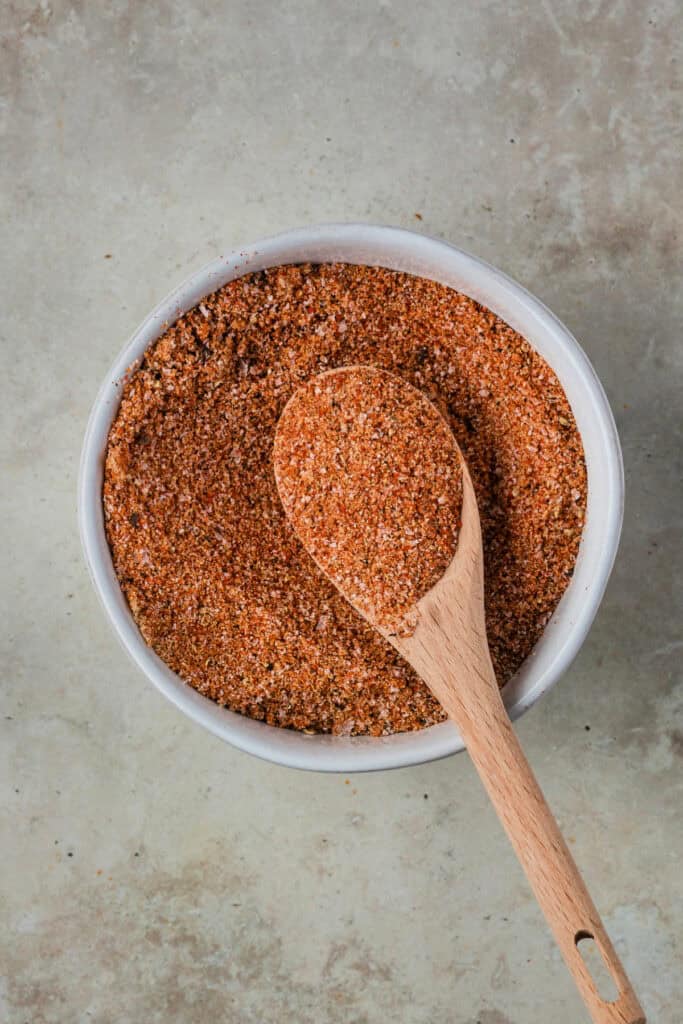
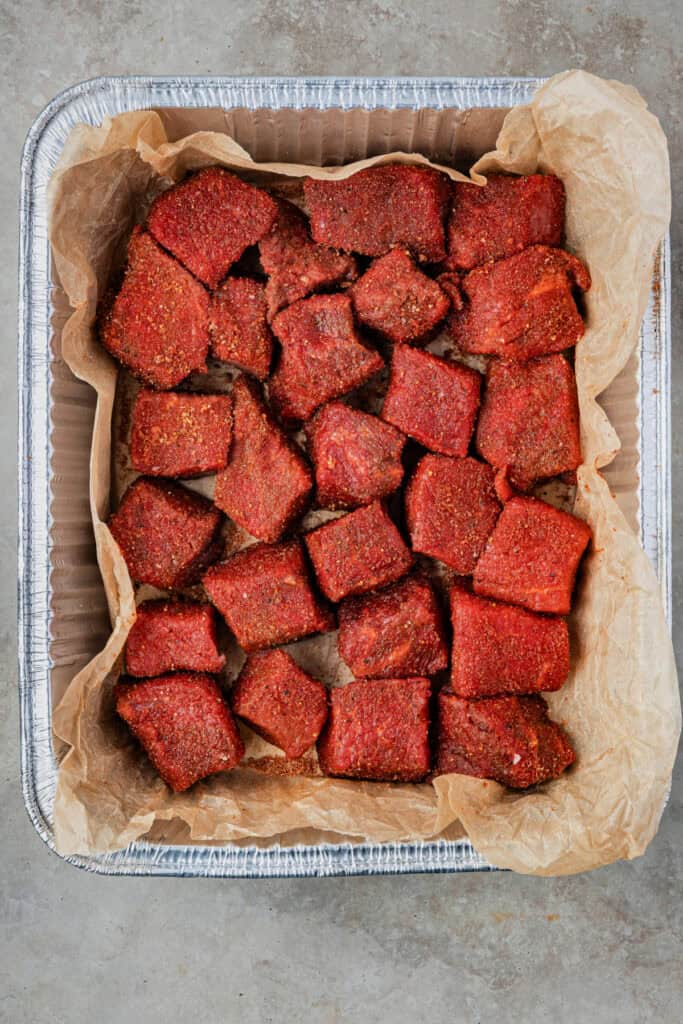

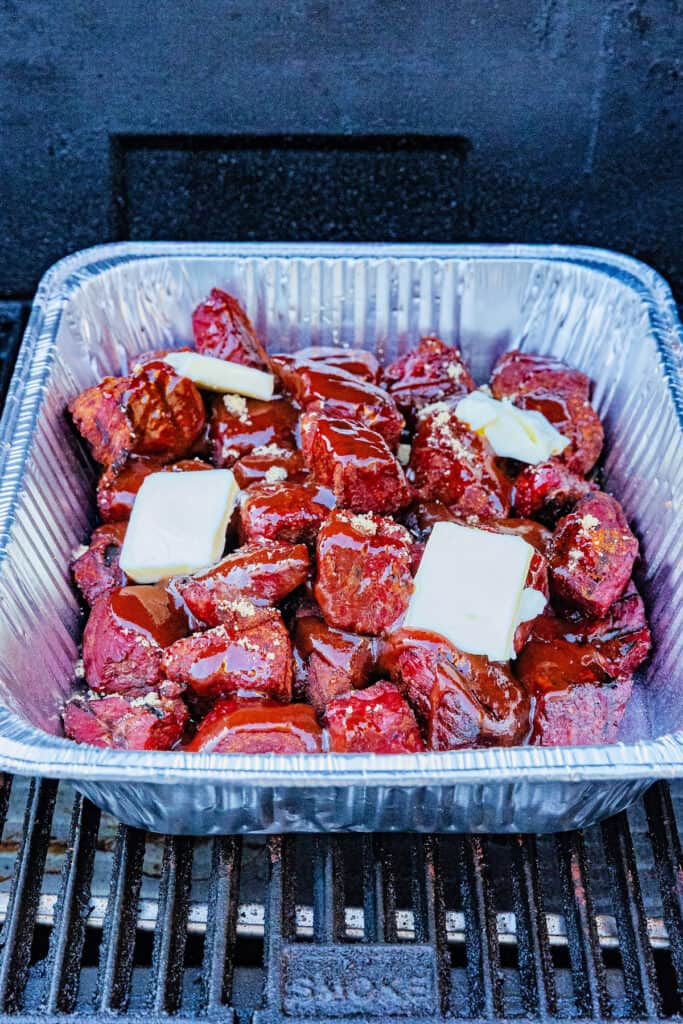
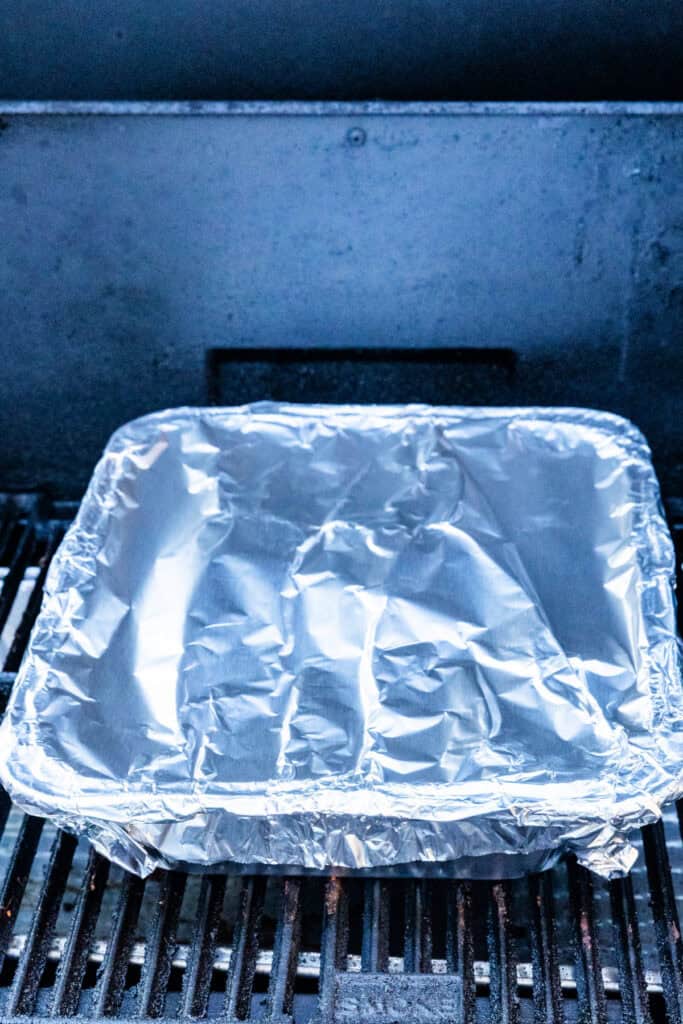
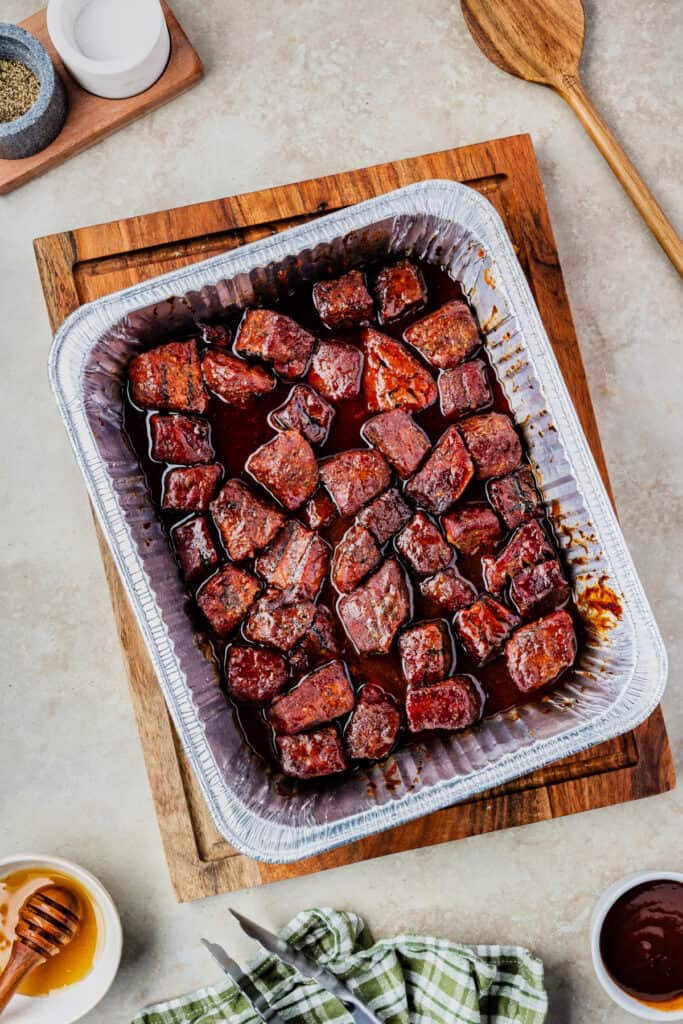
🔥 Tips
- Choose a well-marbled chuck roast for the best texture
- Let the meat rest at room temp while the smoker preheats
- Spritzing keeps the bark from drying out and adds flavor
- Don’t skip the foil pan step – that’s where the magic happens
❓ FAQs
Yes. You can make these in the oven. Use a wire rack over a baking sheet at 250°F. Add a few drops of liquid smoke to the braising step to mimic that classic BBQ flavor.
Spritzing is optional but highly recommended. It helps form a better bark and keeps the meat moist during the initial stages of smoking.
We love cherry wood for its sweet and mild flavor, but oak and pecan also work well. Avoid mesquite – it can be overpowering.
Chuck roast works best. Lean cuts, such as stew meat, won’t break down as well and can end up dry.
Yes! You can season the meat and refrigerate it overnight for optimal flavor. This helps the rub penetrate and boosts flavor. You can also smoke the meat up to the braising step, then finish it later.
They should be fork-tender and fall apart easily when pulled. The internal temperature should be between 195°F and 203°F for optimal texture.
Yes, a pellet grill works great. Just keep it steady at 250°F and use a mild wood, such as cherry or pecan. Pellet grills often maintain good humidity, so spritzing can be optional.
Not until the braising step. Let the meat form a good bark during the initial smoke. Wrapping too early can soften the crust.
Classic BBQ sides, such as mac and cheese, potato salad, baked beans, or cornbread, are always great. You can also serve them as sliders with slaw and pickles.
🍽️ Other Recipes You May Enjoy
Main Dish
Smoked Hot Dog Burnt Ends
Southern Recipes
Blackened Steak and Shrimp with Citrus Butter Sauce
Side Dish
Grilled Corn
Side Dish
Grilled Parmesan Zucchini
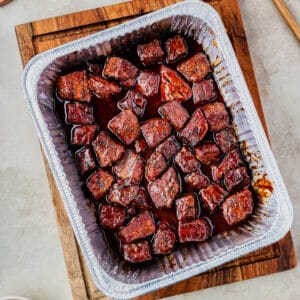
Poor Man’s Burnt Ends
Would you like to save this?
Equipment
- smoker
- grill-safe thermometer
- food-safe spray bottle
- 9×13-inch disposable foil pan
Ingredients
Meat
- 3 to 4 pounds chuck roast, cut into 2-inch chunks
Dry Rub
- 2 tablespoons brown sugar
- 1 tablespoon kosher salt
- 1 tablespoon smoked paprika
- 1 teaspoon coarse black pepper
- 1 teaspoon garlic powder
- 1 teaspoon onion powder
- ½ teaspoon ground cumin
Spritz
- 1 cup beef broth
- 2 tablespoons apple cider vinegar
- 1 tablespoon Worcestershire sauce, optional
Braising Pan
- 3 to 4 tablespoons unsalted butter, cut into pieces
- 2 to 3 tablespoons honey
- ¾ cup BBQ sauce
- 1 to 2 tablespoons brown sugar, to taste
Instructions
Prep the Meat
- Trim excess fat from the chuck roast. Cut into 2-inch chunks and pat dry. Coat evenly with dry rub. Let sit at room temp while smoker preheats.
Preheat Smoker
- Set smoker to 250°F. Add a water pan to retain moisture. Use cherry wood for a sweet, mild flavor. Oak or pecan also work well.
Smoke the Meat
- Place the meat chunks directly on the smoker or on a wire rack. Smoke until internal temp reaches 165°F (about 2.5 to 3.5 hours).
- Spritz every 45 to 60 minutes after the first hour.
Braise the Burnt Ends
- Transfer meat to a foil pan. Add butter, honey, BBQ sauce, and brown sugar. Toss to coat. Cover tightly with foil.
- Continue smoking until internal temp is 195 to 203°F and meat is fork-tender (another 1.5 to 2.5 hours). Stir occasionally.
Optional Finishing
- Remove foil, stir, and return to the smoker uncovered for 20 to 30 minutes to thicken the glaze.
Serve
- Enjoy with BBQ sides or pile onto buns with pickles and coleslaw.
Notes
🥡 STORAGE
- Store leftovers in an airtight container in the refrigerator for up to 4 days.
- For best results, store with extra sauce to keep the meat moist.
♨️ REHEATING
- Oven: Preheat to 300°F. Place burnt ends in a foil-covered baking dish with a splash of beef broth or BBQ sauce. Heat for 15-20 minutes until warmed through.
- Microwave: Place in a microwave-safe dish with a splash of broth or sauce. Cover loosely and heat in 30-second bursts, stirring between each burst.
- Skillet: Reheat in a covered skillet over medium-low heat, adding a bit of butter or sauce for added flavor. Uncover for the last few minutes to caramelize the edges.
❄️ FREEZING
- Cool completely, then store in a freezer-safe container or zip-top bag for up to 3 months.
- Add a bit of extra sauce before freezing to help retain moisture when reheated.
💡 TIPS FOR BEST RESULTS
- Use a well-marbled chuck roast for tender, juicy burnt ends.
- Spritzing during the smoke helps develop a flavorful bark and keeps the meat from drying out.
- Make the rub ahead of time to save time on cooking day.
- Stir the meat in the sauce occasionally during the braising step to ensure an even coating.
🍳 ALTERNATE COOKING METHODS
- Oven: Roast the seasoned meat chunks on a rack over a baking sheet at 250°F. Add liquid smoke to the braising mixture to replicate the flavor of a smoker.
♻️ LEFTOVERS
- Repurpose leftovers into BBQ sandwiches, nachos, tacos, or loaded baked potatoes.
- Chop and mix with scrambled eggs or omelets for a smoky breakfast twist.
Nutrition
Nutrition information is automatically calculated, so should only be used as an approximation.

